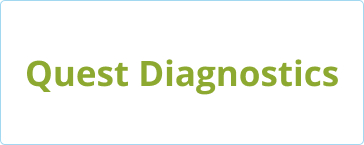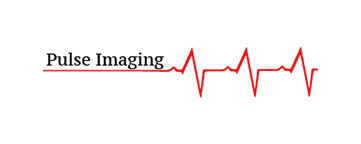ABO Blood Grouping with RH Type
Also known as blood group with Rh factor, ABO group and Rh type
What is an ABO grouping and RH type test?
The ABO system is the most significant blood-group system in transfusion medicine. ABO grouping is a test performed to determine an individual's blood type. The markers (specific carbohydrates or proteins) or antigens on the surface of red blood cells are used to identify blood types. The A and B antigens are two major antigens or surface identifiers on human RBCs. Rh is another important surface antigen. A person's blood type is Rh+ (positive) if the Rh protein is present on red blood cells; if not, the blood type is Rh- (negative). Blood typing determines a person's ABO blood group and Rh type by detecting the presence or absence of these antigens.
Your doctor advises a Blood typing test before a blood transfusion if you want to donate or receive blood. You may also need an ABO group test to see if you have the Rh factor on the surface of red blood cells.
Blood Types
Generally, blood is composed of the same essential components; still, you can find various types. To be precise, there are eight different blood types, and your blood type depends on what type you have inherited from your parents.
An average healthy individual has around 4-6 liters of blood in his body. Your blood is composed of cells that hover in a fluid called plasma. These cells are:
- RBCs (Red Blood cells): These cells transport oxygen to the various tissues in your body and eliminate carbon dioxide.
- WBCs (White Blood Cells): These cells kill harmful substances or invaders and fight infection.
- Platelets help in blood clotting.
Now you must be wondering why your blood is unique to anyone else. It is because your blood has a different combination of proteins known as antigens and antibodies.
As discussed earlier, Antigens are present on the surface of your red blood cells, whereas antibodies can be found in your plasma. So, your blood type depends on this combination of antigens and antibodies.
According to the ABO blood typing system, your blood is divided into four classes:
- Type A (A antigen).
- Type B (B antigen).
- Type AB (both A and B antigens.
- Type O (both A and B antigens are absent)
The body will start producing antibodies as a defense mechanism. However, people can still harmlessly receive blood that isn't their blood type in some rare cases. If the blood they receive doesn't have any antigens that recognize it as unrelated, their bodies won't attack it.
Another way to describe blood compatibility is as follows:
O: If you have blood Type O, you can donate blood to anyone because your blood has no antigens. However, it is crucial to know that you can only receive blood from people with type O.
A: If you have type A, you can donate blood to type A and type AB people. However, you can receive blood only from type A and type O individuals.
B: Similarly, if you have type B, you can give blood to other B and AB individuals. But, again, type B individuals can only get blood from people with type B and type O.
AB: if you are someone with type AB, you can donate blood only to other AB individuals but receive blood of any type. So, you are considered a universal recipient.
The Rh factor further organizes blood types:
Rh-positive: If you have an Rh-positive blood type, you have Rh antigens present on the surface of their red blood cells. You can get Rh-positive or Rh-negative blood.
Rh-negative: If you have Rh-negative blood, do not contain Rh antigens. Therefore, you can receive blood that is also Rh-negative only.
The ABO and Rh grouping systems together confirm your complete blood type. While type O-negative has long been deemed a universal donor, recent research suggests that different antibodies sometimes cause severe reactions during a transfusion.
What is the test used for?
You are advised to go for a blood typing test before a blood transfusion. It is a quick and straightforward way to ensure that you receive the compatible blood type. If incompatible blood is transfused to someone mistakenly, it causes blood clumping or agglutination, which can be lethal. Blood typing is used in conjunction with other tests such as an RBC antibody screen and a crossmatch to establish what type of blood or blood components a person can safely receive. If a unit of blood carrying an ABO antigen to which the blood recipient has an antibody is transfused to the recipient, a potentially deadly transfusion reaction can occur. People with blood group O, for example, have anti-A and anti-B antibodies in their blood. If this person receives a unit of blood from group A, B, or AB, the antibodies in the recipient's blood will react with the red blood cells, killing them and perhaps causing serious complications. In the same way, if an Rh-negative person is transfused with Rh-positive blood, the person is likely to develop antibodies against Rh-positive blood.
Another condition where blood typing is imperative is pregnancy. For instance, if the mother is Rh-negative but the father is Rh-positive, the child will likely be Rh-positive. As a result, antibodies against the Rh antigen may develop in the mother's body. The antibodies may penetrate the placenta and cause the baby's red blood cells to be destroyed, resulting in hemolytic disease of the fetus and newborn (HDFN). An Rh-negative mother is given an injection of Rh immune globulin during her pregnancy and again after delivery if the baby is Rh-positive. The Rh immune globulin binds to and "masks" the fetus's Rh antigen, preventing the mother from developing antibodies against it.
At a collection center, this test is also used to determine the blood group of potential blood donors. Donor blood units are blood typed and carefully labeled to be utilized for patients who require a specific ABO group and Rh type.
As part of the workup for transplant surgery, this test may be used to determine the blood group of possible donors and recipients of organs, tissues, or bone marrow. ABO blood type is used in conjunction with HLA testing to identify and match organ and tissue donors with recipients with the same or a sufficient number of matching HLA genes and antigens.
Why and when do you need this test?
ABO grouping and RH type test is required :
- In pregnancy: As discussed above, this test ensures that the mother and baby's blood is compatible.
- If you need to undergo a blood transfusion or organ transplant, this test will ensure that the donor's blood is compatible with yours.
- If you want to donate blood, your doctor first wants to confirm your blood type.
- Sometimes newborn babies also require blood typing to examine specific diseases and conditions.
The following conditions may require a transfusion:
- Severe anemia as well as anemia-causing conditions such as sickle cell disease and thalassemia
- Trauma or injury
- Excessive blood loss
- Bleeding during or after surgery
- Chemotherapy and cancer
- Hemophilia and other bleeding disorders
What kind of sample is required for the test?
- Your blood sample is combined with several samples of plasma known to carry different antibodies.
- The sample collection method can occur at a hospital or a sample collection laboratory.
- The technician will clean your skin before the procedure with an antiseptic to prevent an infection.
- A band will be wrapped around your arm to make your veins prominent.
- They will use a needle to pick several blood samples from your arm or hand.
- After the draw, pressure will be applied to the punctured area to prevent bruising.
Do you need to prepare for the test?
You don't need any specific preparation for blood typing.
Are there any risks to the test?
For blood typing, you need to withdraw a blood sample. However, the blood withdrawing process is simple and carries minimal risks. In rare cases, it may lead to:
- Hematoma
- Fainting
- Infection at the needle site
- Excessive bleeding
What do the test results mean?
To know your blood type, a lab technician will combine your blood sample with antibodies that attack types A and B blood to check how it responds. If your blood cells clump or agglutinate when mixed with antibodies against type A blood, it means you have type B blood.
After that, your blood sample will be mixed with an anti-Rh serum. If your blood cells clump together due to the anti-Rh serum, it shows that you have Rh-positive blood.
| Blood Group and Rh Type |
Compatible Blood Types(RBC Transfusions) (-ve= negative , +ve = positive) |
| A (+ve) |
A (+ ve), A (- ve), |
|
O (+ ve), O (- ve) |
|
| A (- ve), |
A(- ve), O (- ve) |
| B (+ ve), |
B (+ ve), B (- ve), O (+ ve), O (- ve) |
| B (- ve) |
B (- ve), O (- ve) |
| AB (+ ve) |
AB (+ ve), AB (- ve), A (+ ve), A (- ve), B (+ ve), B (- ve), O (+ ve), O (- ve) |
| AB (- ve) |
AB (- ve), A (- ve), B (- ve), O (- ve) |
| O (+ ve), |
O (+ ve), O (- ve) |
| O (- ve) | O (- ve) |
The inverse of red blood cell compatibility is blood plasma compatibility. Type AB plasma contains no anti-A or anti-B antibodies and can be given to people of any blood type; however, type AB patients can only receive type AB plasma. Individuals of blood group O carry both antibodies; therefore, they can receive plasma from any blood group. However, type O plasma can only be used by type O recipients.
| Plasma Compatibility: | |
| Patient’s Blood Group | Donor’s Blood Group |
| O | 0, A, B, AB |
| A | A, AB |
| B | B, AB |
| AB | AB |
Related Tests ABO group, ABO group and RH reflex, Direct Antiglobulin Test, Red Blood Cell (RBC Blood Test) Antibody Screen, HLA Testing,
Frequently ordered together
Red Blood Cell RBC Count
Rh Antibody
ABO GROUP
ABO Group and Rh Type (Reflex)
ABO Group and Rh Type-Cord Blood
ABO Group and Rh Type-Reflex
CBC (HH-RBC-WBC-PLT)
13.00$
15.00$
15.00$
19.00$
19.00$
19.00$
16.00$














